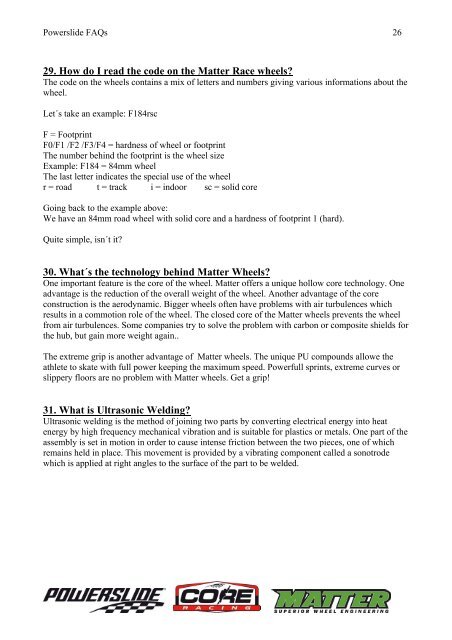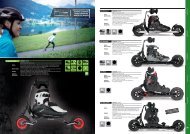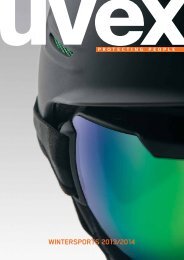FAQ - Speed - ssf1896.dk
FAQ - Speed - ssf1896.dk
FAQ - Speed - ssf1896.dk
Create successful ePaper yourself
Turn your PDF publications into a flip-book with our unique Google optimized e-Paper software.
Powerslide <strong>FAQ</strong>s 26<br />
29. How do I read the code on the Matter Race wheels?<br />
The code on the wheels contains a mix of letters and numbers giving various informations about the<br />
wheel.<br />
Let´s take an example: F184rsc<br />
F = Footprint<br />
F0/F1 /F2 /F3/F4 = hardness of wheel or footprint<br />
The number behind the footprint is the wheel size<br />
Example: F184 = 84mm wheel<br />
The last letter indicates the special use of the wheel<br />
r = road t = track i = indoor sc = solid core<br />
Going back to the example above:<br />
We have an 84mm road wheel with solid core and a hardness of footprint 1 (hard).<br />
Quite simple, isn´t it?<br />
30. What´s the technology behind Matter Wheels?<br />
One important feature is the core of the wheel. Matter offers a unique hollow core technology. One<br />
advantage is the reduction of the overall weight of the wheel. Another advantage of the core<br />
construction is the aerodynamic. Bigger wheels often have problems with air turbulences which<br />
results in a commotion role of the wheel. The closed core of the Matter wheels prevents the wheel<br />
from air turbulences. Some companies try to solve the problem with carbon or composite shields for<br />
the hub, but gain more weight again..<br />
The extreme grip is another advantage of Matter wheels. The unique PU compounds allowe the<br />
athlete to skate with full power keeping the maximum speed. Powerfull sprints, extreme curves or<br />
slippery floors are no problem with Matter wheels. Get a grip!<br />
31. What is Ultrasonic Welding?<br />
Ultrasonic welding is the method of joining two parts by converting electrical energy into heat<br />
energy by high frequency mechanical vibration and is suitable for plastics or metals. One part of the<br />
assembly is set in motion in order to cause intense friction between the two pieces, one of which<br />
remains held in place. This movement is provided by a vibrating component called a sonotrode<br />
which is applied at right angles to the surface of the part to be welded.







